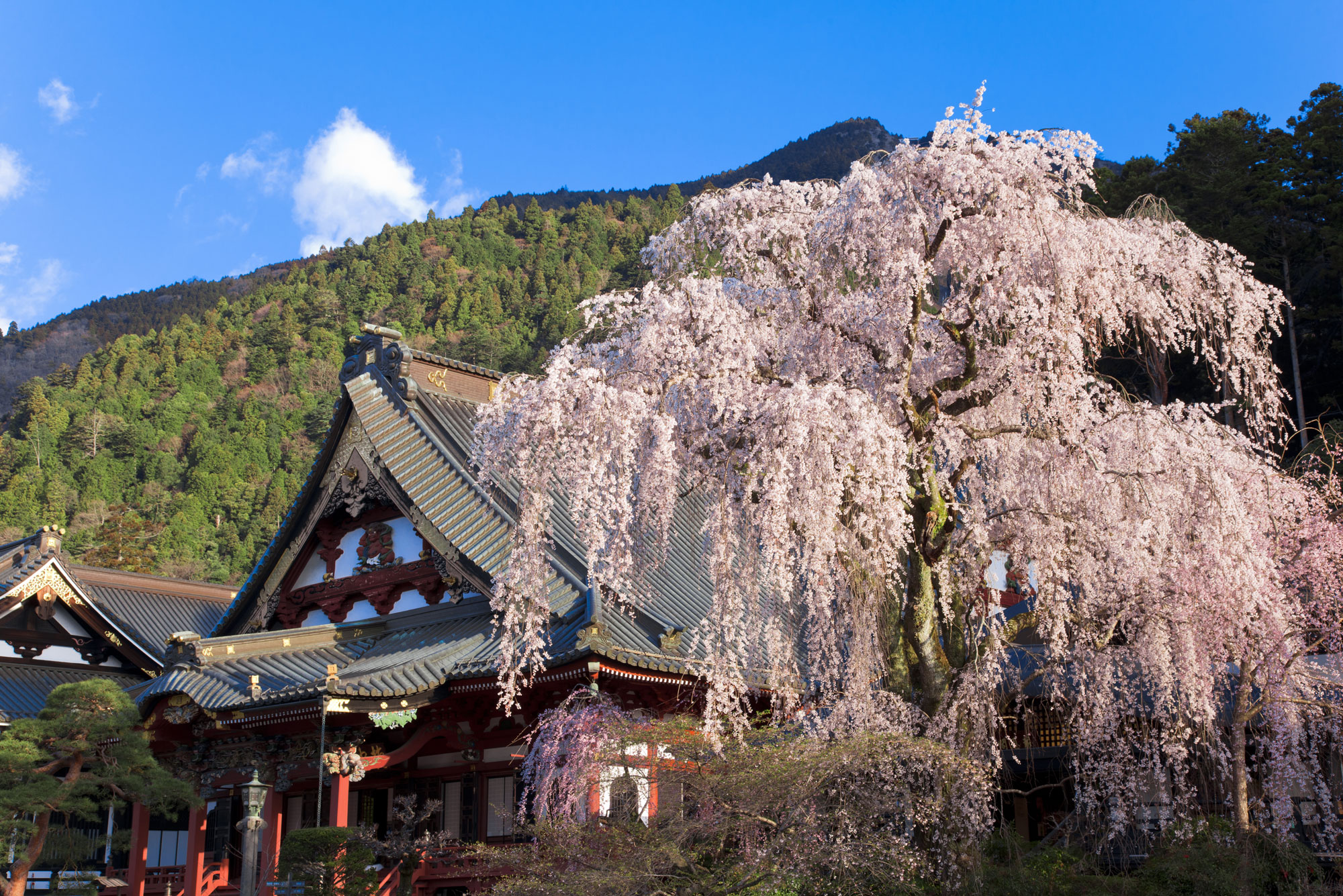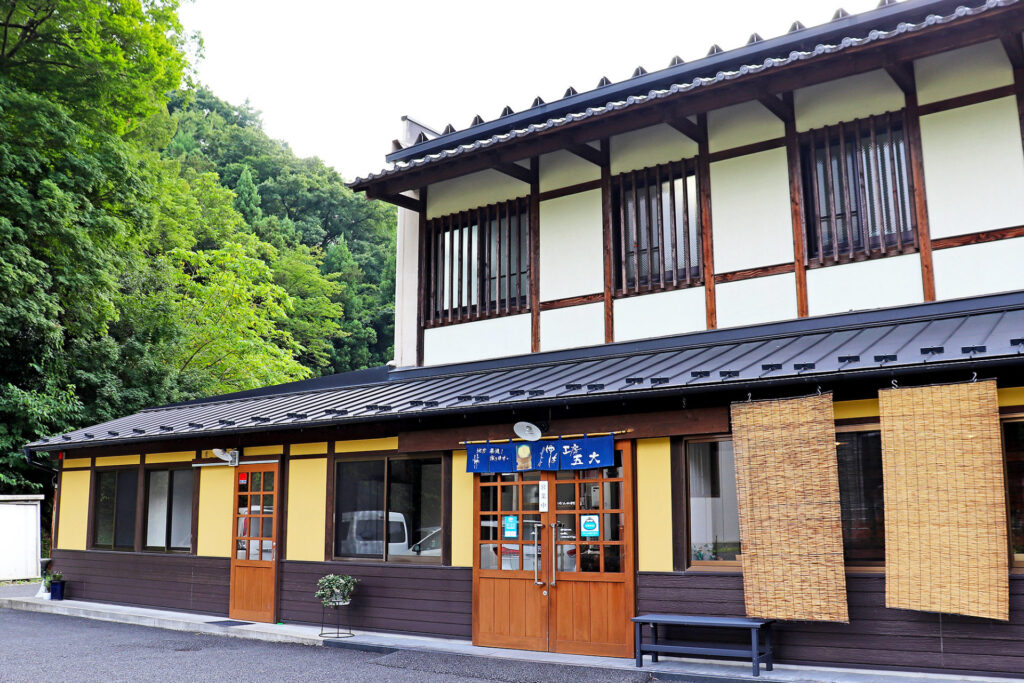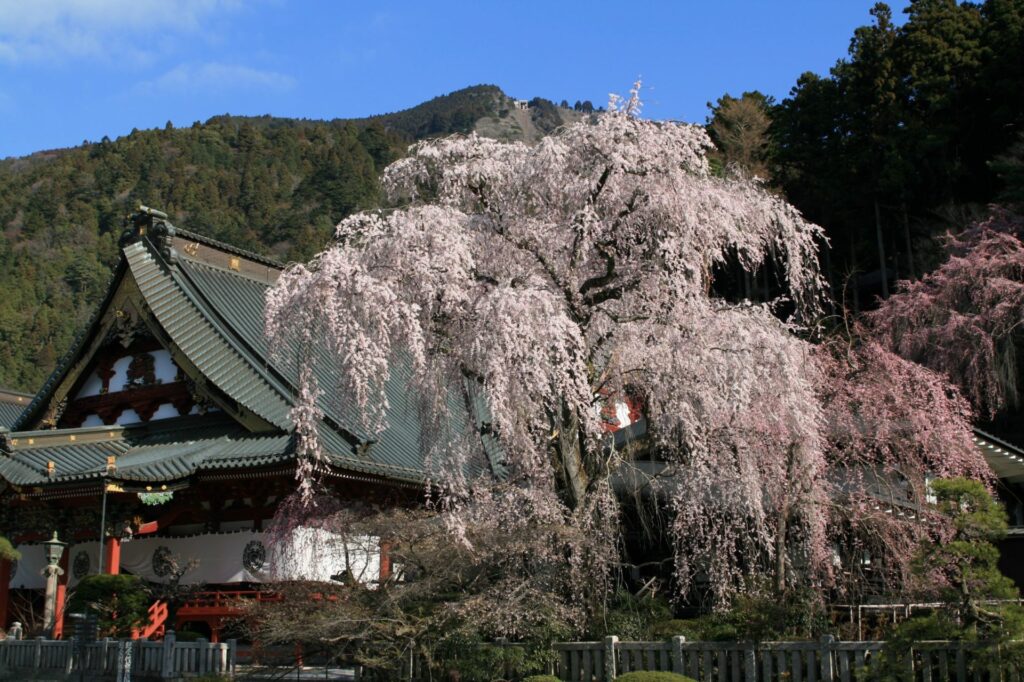A place to visit not just once in a lifetime, but season after season.
About Minobu-san
Recommendations!!
- The best time to visit Minobu-san is not only spring when the weeping cherry trees are in full bloom!
- Complete the full list of about 20 lodgings!
- The more you walk around Mt. Minobu, the more you will discover!
“I want to visit Minobu once in my life!” is what many people who lived in the 17th century wished. However, “I want to visit Minobu in my next trip to Japan!” will be your words, if you think you’ve already seen everything in Kyoto, if you’ve already seen thatched roof farm houses in Takayama, or if you’ve already experienced a temple stay in Mt. Koya.

ABOUT KUON-JI TEMPLE, the Head Temple of Nichiren-shu (久遠寺と日蓮宗について)
Just as there are several denominations within Christianity, there are many also in Japan’s Buddhism. There are thirteen major and traditional denominations (called “shu”). Each has its own head temple, like St. Peter’s Basilica of the Catholic denomination, where the Pope serves. While Koyasan (Mt. Koya), which is now very popular among foreign visitors, is the mountain that houses the head temple of Shingon-shu (Shingon Buddhist), Minobusan (Mt. Minobu) is the key site where the head temple of Nichiren-shu (Nichiren Buddhist) is located. It is called Kuon-ji (the Temple of Kuon) and was founded by Nichiren Shonin (1222-1282) in 1274. Nichiren Shonin was born and became a monk in a small village in the Boso peninsula in Chiba prefecture. After studying in head temples of various shu, he started his own demonination. He spread his belief in Kamakura which was the capital at that time, and he made suggestions on how to make the country a better place to the Kamakura Shogunate, who rejected them and cracked down on him. However, he continued to practice his beliefs, even though he was banished to a remote province and island several times. After he was pardoned, he transferred to Minobu and founded Kuon-ji.
Nichiren Shonin’s ideology is based on the Lotus Sutra, or Hoke-kyo, which is the teaching of the Buddha that anyone can equally obtain inner peace. It was introduced to Japan in the 6th century and it was already popular during Heian Period (794-1185), when the capital was in Kyoto. As it was long and very difficult to understand, many study groups were held where Murasaki Shikibu, the author of the Tale of Genji, is known to have participated. According to Rev. Hamajima, the former president of Minobusan University, “Hang in there!” is the fundamental message of Hoke-kyo. Even though this world is full of difficulties, opposition, and discouragement, you have to carry on in your life to make the world a peaceful place.
SO-MON GATE (総門)
The world of Hoke-kyo starts at the magnificent “So-mon” gate with a signboard with beautiful calligraphy, that says that anyone will be saved regardless of sex, religion, race or nationality. A path which leads to the temple is quite a precipitous slope. If you come by car, you can keep going without speeding up your heart rate. However, by leaving your car at the parking lot soon after the first gate, you can visit many traditional small shops along the path, which will gratify your curiosity.
SAN-MON GATE(三門)/BODAITEI STEPS (菩提悌)
The second gate called “San-mon”, which is larger and sublimer than the first one, will surprise you, but another bigger surprise is waiting for you. That is the long and steep stairs which look like a wall blocking the path! There are 287 steps and each step is about 30 centimeter high. (cf: The average of the step’s height at train stations is 16.5 centimeters.) These stairs are called “Bodaitei” which means the stairs toward the enlightenment. They will make you wonder if they are a stairway to heaven. An incline elevator is also available as a shortcut for those who want to achieve the enlightenment in an easier way. Here, too, there is no discrimination!
INSIDE THE KUON-JI TEMPLE (久遠寺境内)
Go inside the edifices. Take your time to appreciate the dragon painted in black and gold on the ceiling, and an artefact of fine carving from the 18th century. Unlike many other famous temples, there are not big statues of Buddha in Kuon-ji, which may be one of its characteristics. It may be because Nichiren-shu puts more importance to the teaching of the Buddha than Buddhas themselves, which is also shown through their chanting practice. In many other shu, the name of the Buddha Amida, or Amitàbha in Sanskrit, is chanted but in Nichiren-shu the devotion to the supreme law of the Lotus Sutra is chanted.

MORNING RITUAL (朝勤)
If you want to know more about Kuon-ji, we strongly recommend you to participate in the Morning Prayer in the main hall that starts at five thirty (at six from October to March). You must be astonished by loud and powerful voices of many young monks chanting sutras lead by an experienced elderly priest. The Japanese drums – large and small – keep the rhythm. Not to put too fine a point on it, but you may feel that it is like the heavy metal of Buddhism. While Kuon-ji’s stairs remind you of Stairway to Heaven by Led Zeppelin, the Morning Prayer sounds like Smoke on the Water by Deep Purple!
OKUNOIN SHISHINKAKU (奥之院 思親閣)
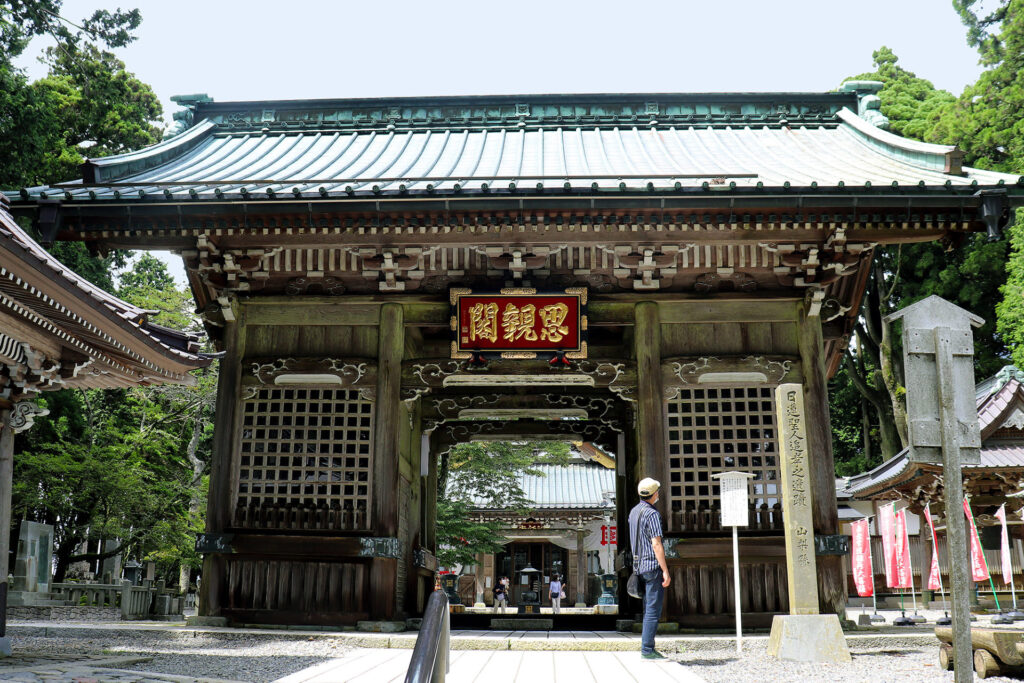
WHERE DO YOU STAY, IN A TEMPLE OR RYOKAN? (宿坊・旅館)
There are twenty temples that offer lodging services, which are called shukubo, and three ryokan (Japanese styled hotel) in the Mt. Minobu. Each of them has its own characteristic; some offer various Japanese traditional experiences to foreign visitors, some offer a teaching of Buddhism in various languages, and some offers various experiences of Buddhist training!



CHERRY BLOSSOMS IN MT. MINOBU (身延山の桜)
Mt. Minobu is known as one of the best cherry blossom spots and many tourists come to enjoy the beautiful scenery of spring. When hundreds of cerry trees in the mountains around the temple bloom, you’ll feel as if even the air becomes pinkish. Must see in the spring time are the two 400-year-old big weeping cherry trees with long and drooping branches. Normally they bloom faster than the cherry trees in other areas, you should be attentive to our announcements in this site!
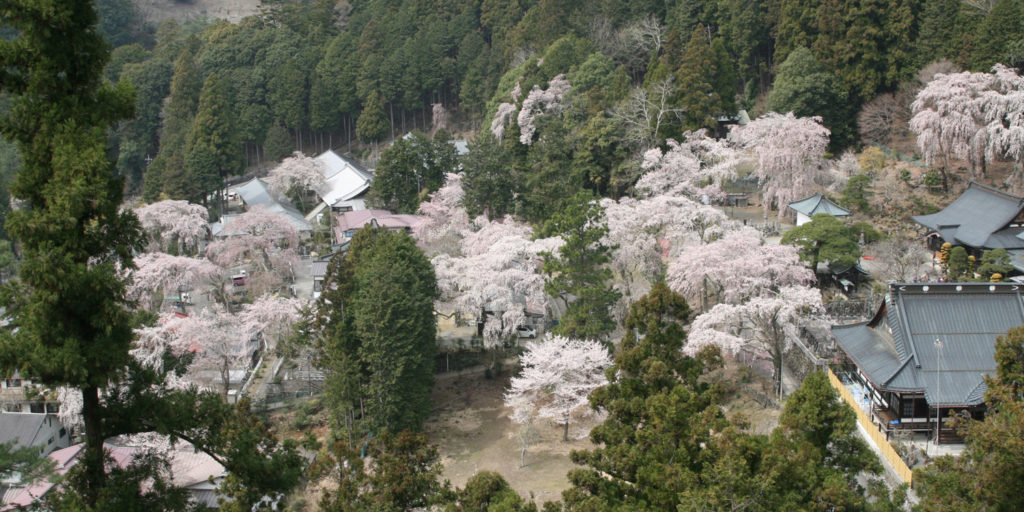

GET A GOSHUINCHO NOTEBOOK AND COLLECT TEMPLE STAMPS! (御朱印帳について)
No tourists from abroad may go back home without visiting any Buddhist temples or Shinto shrines in Japan. In fact, there are about 77,000 Buddhist temples and 81,000 Shinto shrines according to the 2018 statistics. There are too many for you to collect all the stamps in your goshuincho as these numbers include small temples/shrines where they don’t have their stamps and where there is no one to take care of the visitors. Goshuincho is a book on which you collect the original stamps and the handwritings of the temples and shrines. It proves your pilgrimage and it will also be suitable for a souvenir even though you cannot read them. A completed goshuincho is believed to provide you of certain spiritual fulfillment.






